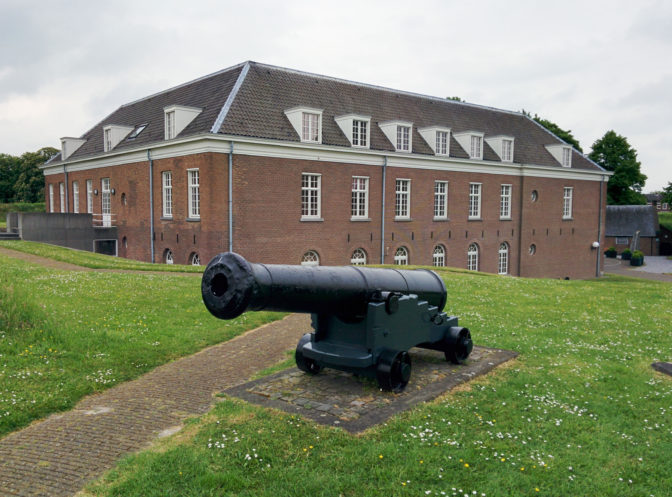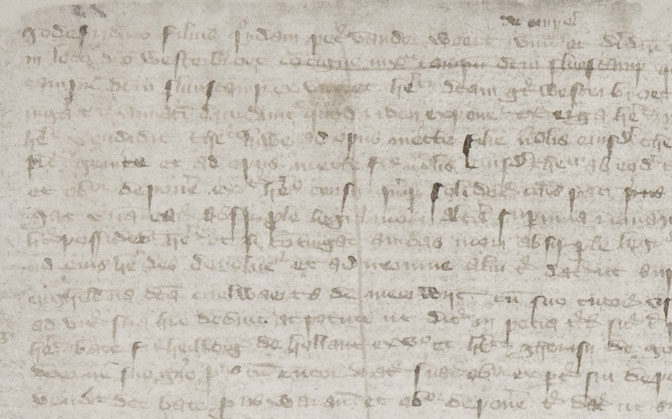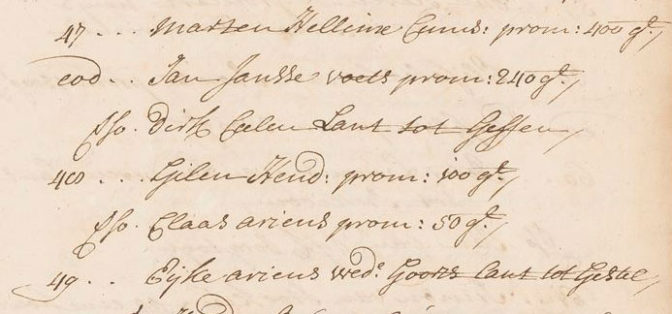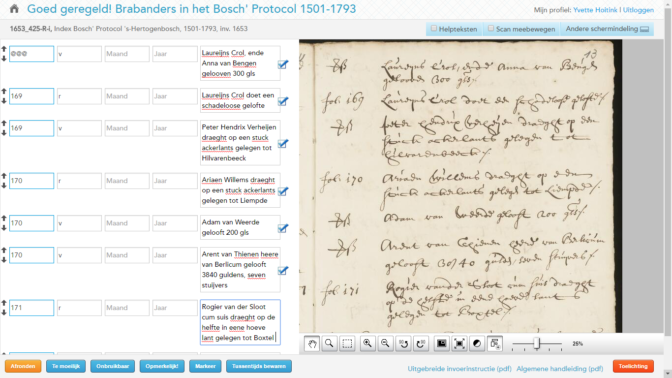442 years of records, spanning the period of 1367 to 1809. One of the most complete series of court records anywhere in the country. More than half of them in Latin.
The Bosch’ Protocols, the voluntary court records of the jurisdiction of ‘s-Hertogenbosch in Brabant, are a treasure trove of information. It has wills. It has deeds. It has prenups. It has stories about families from the entire region, since the jurisdiction of the city encompassed a large part of the former province of Brabant.
But it is not the brick-wall-buster it could be. Among genealogists, the Bosch’ protocols have a reputation for being among the hardest sources to use. A new indexing project is about to make that just a little bit easier.

Brabants Historisch Informatiecentrum, located inside the fortress of ‘s-Hertogenbosch. Photo by author
Indexing the indexes
Last week, I joined the kick-off session of this project, organized by the Brabants Historisch Informatiecentrum (provincial and regional archives of Noord-Brabant) and the Stadsarchief ‘s-Hertogenbosch (city archives).
The protocols have been digitized: about half a million scans, all available online (see the “Zoeken in Bossche Protocollen” search instructions, in Dutch only). These will be indexed using the VeleHanden (Many Hands) website, a platform where volunteers help to index records. Instead of reading half a million pages, we will be entering an index created in the 1700s, which gives a one-line-summary per record. Even this index spans 28,000 pages.
Besides the number of pages, there is another reason for using the index. Compare the number of people who will be able and willing to help with this:

Fragment of the Bosch Protocols, 1368
to this:

Fragment of an index of the Bosch’ Protocol
The archives had estimated that indexing the original protocols would take 93 man years. Based on past experiences with VeleHanden projects, I expect that the contemporary indexes will be entered by online volunteers in less than a year.
Expected results
The results will not be ideal. The index only names the first party in a record, so searching for your ancestors’ names will miss records. The summary gives only a minimum amount of information. You will still need to read the original record to find out what is going on. But the index names the village or town (where no town is listed, the record is about ‘s-Hertogenbosch itself and not one of the towns in the jurisdiction of ‘s-Hertogenbosch), so you will be able to see if there are any records for the place where your ancestor lived.
Reading the original records will require a good understanding of Latin, Middle Dutch or Dutch, and knowledge of old handwriting. If that is a problem, you can always hire someone to help you 🙂
Joining the project
Anyone who is able to read and understand Dutch handwriting from the 1700s can join the project. You will need to understand what you are transcribing, since you will need to resolve references such as “deselve” [same person as the person in the previous line]. This project is only for people who have a good understanding of Dutch and at least some experience reading older documents.
If you want to join, you will need to create an account at VeleHanden and read the instructions. You can choose between entering easy pages, like the fragment shown above, or the hard pages, like the one I’m currently working on as shown below.
We all use indexes to find our ancestors. Let’s give back to the community and join this project if we can.

Entry form at VeleHanden


Why is it called Bosch? I am interested because part of my tree is the Bosch family.